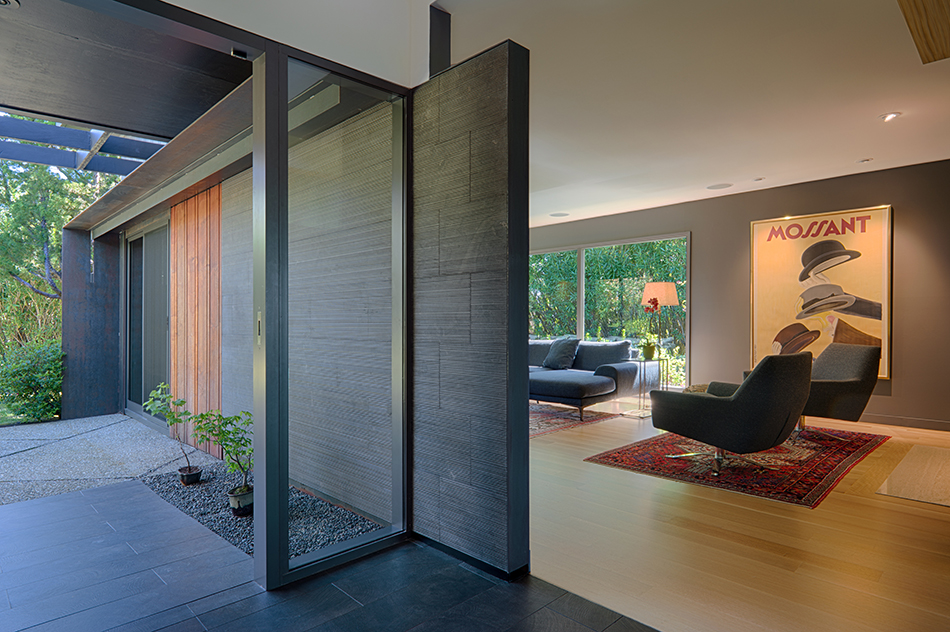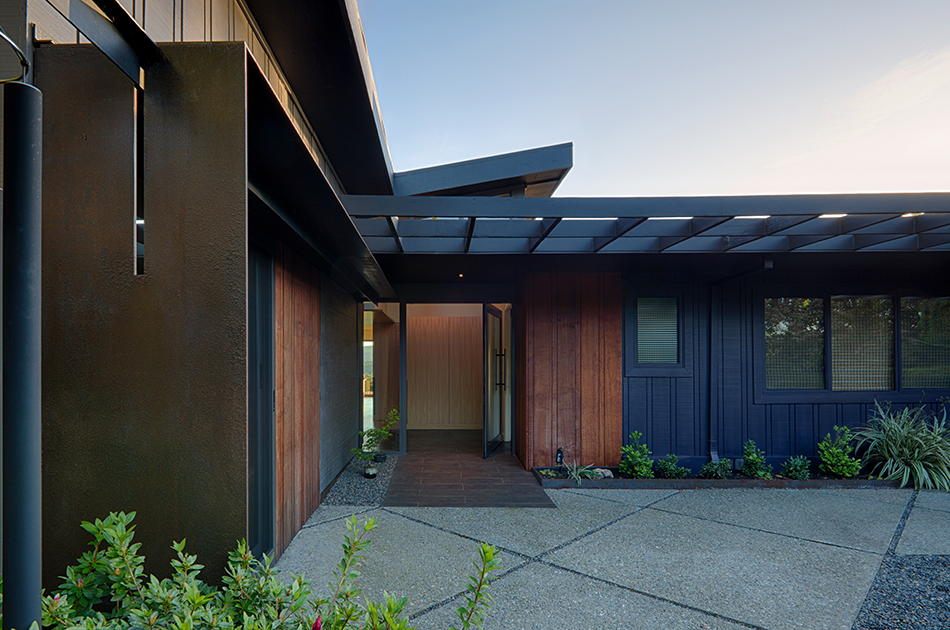Eichler homes brought mid-century modern design to the masses through tract houses constructed in postwar residential subdivisions in California, north and south. The modest, affordable houses were known for flat or low sloping roofs, open plans, and for “bringing the outside in.” Eichler homes’ front-to-back planning featured small windows facing the street, and large windows facing the backyard that put the emphasis of the owners’ lived experience in an American-style interior courtyard, an amenity formerly reserved for the rich. Vertical wood paneling, gabled ceilings and floor-to-ceiling, glazed walls combined with open floor plans, exposed beams and concrete floors allowed owners to pass through a portal from the street to their own Shangri-La or Xanadu with natural elements made to soothe the soul. There were approximately 11,000 Eichler homes made throughout northern and southern California and these homes pioneered the “California Modern” style of the 70s. Eichler himself was not an architect, but he had a life-changing experience during the Second World War when his family rented a Frank Lloyd Wright Usonian home from a navy pilot serving overseas. When the war ended, Eichler started a company to build Wright-inspired houses for the masses, and he hired Robert Anshen to design them.
Raised in LA in the 50’s and 60’s many of my school mates’ families lived in Eichler, or Eichler influenced, homes. The vernacular of open rooms, large expanses of glass, vaulted ceilings and simple post and beam structures with low sloping gable roofs was ubiquitous in new homes throughout the San Fernando Valley. Adolescent memories of playing Monopoly, Clue, and Scrabble on those carpeted concrete living room floors evoke the modern post-war Leave It to Beaver era. In the smog-polluted, gas guzzling, carbon-unconscious daze of L.A., these uninsulated, single-paned energy-hog homes were blissfully simple, relatively inexpensive, and defined contemporary modern lifestyle for the masses of the time. Their popularity as classic modernist icons spoke well of their inherent symbiosis with the American Dream and the desire for indoor/outdoor casual living. Refurbished with thin foam roof insulation, double-paned glass windows and doors, and advanced radiant floor heating –– modern affordable homes designed for the middle classes enduring as an inspiration

